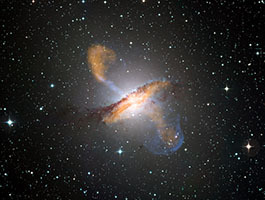6.07.2018

Using Integral Field Spectroscopy (IFS1) and advanced modeling tools, Instituto de Astrofísica e Ciências do Espaço (IA2) researchers Iris Breda and Polychronis Papaderos have achieved an important milestone towards solving a long standing enigma in extragalactic astronomy – the nature and formation of the central spherical component in spiral galaxies like the Milky Way.
The bulge is thought to form through two distinct routes: Classical bulges consist of ancient stars, older than the disk, because they assembled rapidly more than 10 billion years ago, prior to disks. Pseudo-bulges have stars of similar age as the disk, because they assembled gradually through a combination of dynamical processes, with continuous star formation fed by inflow of gas from the disk.
These two scenarios imply that classical bulges and pseudo-bulges have strikingly different characteristics, but this sharp contrast was never observed, despite numerous studies over the past years.
To solve this riddle, the team has carried out an unprecedented spectral modeling analysis of more than half a million individual spectra, to spatially resolve the star formation history of bulge and disk components of 135 galaxies from the CALIFA3 IFS survey.
According to PhD student Iris Breda (IA & Science Faculty of the University of Porto), what they found “implies that the formation timescale of bulges is inversely related to total galaxy mass: bulge formation in massive galaxies is completed within the first 4 billion years of cosmic evolution, whereas it is still ongoing at a low pace in less massive ones.”
This study4, published in Astronomy & Astrophysics, reveals a coherent new scenario for the formation of galaxy bulges. Breda adds: “our study reveals a clear continuity in the properties of bulges, which strongly argues against the standard picture of two opposite bulge formation scenarios. Instead, bulge growth is driven by a superposition of quick-early with slow-secular processes, the relative importance of which is regulated by the mass and density of galaxies.”
Another goal of this project has been to assess the role of Active Galactic Nuclei (AGN), powered by matter accretion onto super-massive black holes. They found that AGNs are the dominant source of gas ionization in massive bulges, whereas negligible in younger low-mass bulges. This could have far-reaching implications for our understanding of the co-evolution between bulges and super-massive black holes.
To FCT researcher Polychronis Papaderos (IA & University of Porto), “Our results are consistent with the notion both that the radiative efficiency of matter accretion onto Super-massive black holes scales with SMBH-mass or with a positive correlation between galaxy mass and super-massive black holes-to-bulge mass ratio. A further exploration of these hypotheses is of considerable interest.”
This computationally demanding project went beyond previous ones, with regard to the amount of data analyzed, by the fact that it provided an accurate separation of bulge and disk, but also because, for the first time, a post-processing of the inferred star formation histories with RemoveYoung5 was made. This way it has been possible to explore how bulge and disk were formed.
The study found that the luminosity contribution of stars younger than 9 billion years tightly correlates with stellar mass, stellar surface density, age and level of chemical enrichment of galaxy bulges. This quantity is therefore a powerful new diagnostic of the physical and evolutionary properties of galaxy bulges.
To IA coordinator José Afonso (IA & Science Faculty of the University of Lisbon): “This is a wonderful demonstration of IA's scientific and technical capability to understand one of the biggest mysteries in Astrophysics – how galaxies were formed throughout the entire history of the Universe. The use of the efficient computational tools developed by IA’s researchers, together with observations from some of the most powerful telescopes and instruments available, is opening up a new view, and a new understanding, on the assembly history of galaxies, not only across space but also time.”
Notes
- In integral field spectroscopy, the signal from each pixel on the detector is sent into a spectrograph, which then generates a spectrum, allowing for the simultaneous recording of thousands of spectra per galaxy, thus producing a spatially resolved three dimensional view of its stars and ionized gas.
- The Instituto de Astrofísica e Ciências do Espaço (Institute of Astrophysics and Space Sciences – IA) is the largest Portuguese research unit of space sciences, which integrates researchers from University of Porto and University of Lisbon, and encompasses most of the field’s national scientific output. It was evaluated as Excellent in the last evaluation from the European Science Foundation (ESF). IA’s activity is funded by national and international funds, including Fundação para a Ciência e a Tecnologia (UID/FIS/04434/2013), POPH/FSE and FEDER through COMPETE 2020.
- The Calar Alto Legacy Integral Field spectroscopy Area (CALIFA) survey is a project conceived at the Instituto de Astrofísica de Andalucía (IAA-CSIC) and carried out at the Calar Alto Observatory (Almeria, Spain) with the 3.5 meter reflecting telescope, using Integral Field Unit (IFU) spectroscopy. CALIFA is the first IFU survey to make its data public.
- The article “The continuous rise of bulges out of galactic disks” was published in the journal Astronomy & Astrophysics (Vol. 614, A48, June 2018, (DOI: 10.1051/0004-6361/201731705)
- RemoveYoung is a new tool developed by Instituto de Astrofísica e Ciências do Espaço (IA) astronomers Jean Michel Gomes and Polychronis Papaderos. It is designed to suppress, from galaxy images, the luminosity contribution of young stars.
Quelle; ia
